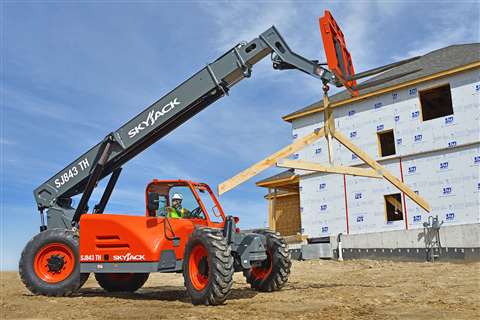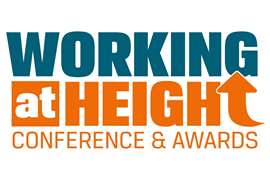New telehandlers: Everything you need to know
08 August 2022
Access International rounds up the latest developments and products in the world of telehandlers.
Compact equipment, rotating models and electric units have all seen an increasing number of launches in recent years and months, with green energy telehandlers becoming a real focus for manufacturers.
Manitou is launching a major electric and hybrid initiative across its Oxygen series of telehandlers and aerial platforms, which will see the company offer electric and hybrid version of many of its models this year.
Apart from 100% of the company’s self-propelled booms, this includes some fixed and rotating telehandlers, with the fixed units also becoming available as hybrid options.
Another major advantage of Manitou’s electric products will be their TCO, says the company, with customers saving more than 20% overall during the average year.
Manitou has also put its new fully-electric rotating telehandler on display to the public for the first time.
The MRT 2260 rotary telescopic forklift model, which was launched online in April 2021, was shown at the 39th Matexpo trade fair in Belgium last year.
It is fitted with a lithium-ion battery that allows users up to four hours of working time and has a maximum load capacity of 6 tonnes and a working height of 22m.
Indeed, Manitou will continue to extend its low emission telehandler offering with models being brought out this year, followed by more in 2023 for both construction and agricultural equipment. As such, the company is aiming for 43% of its machines to be low emission products by 2030.
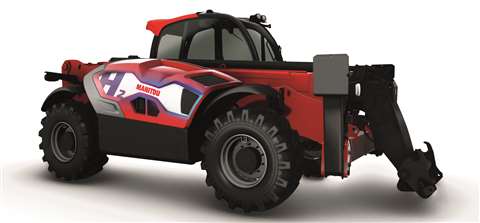 Manitou’s first hydrogen-powered prototype will be put into ‘real-world’ testing later this year
Manitou’s first hydrogen-powered prototype will be put into ‘real-world’ testing later this year
Hydrogen equipment
Another focus for Manitou is hydrogen, which will lead to the introduction of a prototype hydrogen-powered telehandler later this year.
The company said progression in this area was partly possible due the EU promoting the installation of hydrogen facilities which is leading to a growing network.
The company pointed out that while creating infrastructure for hydrogen power in the automotive industry is difficult, due the number of cars on the road and their constant movement, heavy duty cycle vehicles have a much lower real-term usage on a construction site, meaning they are more suited to a hydrogen network.
Manitou is supporting the cause through its partnerships with French hydrogen specialist companies.
While the safety of hydrogen has been highlighted as an area of concern, Manitou explains that the risks are similar to LPG, therefore once safety standards are updated to reflect that, those risks should be minimised.
And, in response to concerns over the cost of hydrogen power, the company says it has already accurately forecasted that over the next four years the cost will become similar to other installed energy, like electricity.
Therefore, when Manitou’s prototype telehandler is introduced onto worksites for testing later this year, all other complementary areas will also be under development.
Electric telehandlers
JCB is following the same path, and has signed a deal said to be worth billions of euros, to buy green hydrogen from Australian energy company Fortescue Future Industries (FFI).
The purchase will make FFI the UK’s largest supplier of the clean fuel, while driving forward JCB’s plans to launch hydrogen-powered construction equipment onto the market.
The company will also invest £100 million ($138.3 million) to produce hydrogen engines and has targeted Q4 2022 as the launch date for the first customer machines.
In October JCB unveiled a prototype hydrogen-powered backhoe and also a telescopic handler.
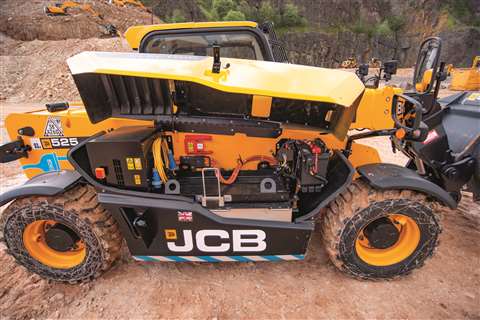 JCB’s electric telehandler with a view of its drivetrain. (PHOTO: JCB)
JCB’s electric telehandler with a view of its drivetrain. (PHOTO: JCB)
Lord Bamford, JCB chairman, said, “We are investing in hydrogen as we don’t see electric being the all-round solution, particularly not for our industry because it can only be used to power smaller machines.”
Other manufacturers are taking a range of options on the green-energy journey. Genie has opted for the hybrid option with its boom lifts and now is suggesting a similar aim with telehandlers.
Amalija Kopac, product manager at Genie, says it is seeing other manufacturers coming out with electric solutions, which is something it is also paying close attention to.
Kopac adds, “We have hybrid FE technology in our boom lifts and are continuing to evolve this technology to meet the increasing demands for low-emission and low-noise machines.”
As Genie says, there are a series of compact electric telehandlers to have come onto the market, and they are proving to be a real option from users in the market.
“However, we’re also aware of the challenges that the lack of charging infrastructure and high acquisition costs impose. Genie is focused on solutions that meet the needs of our customers and that add value to their business.”
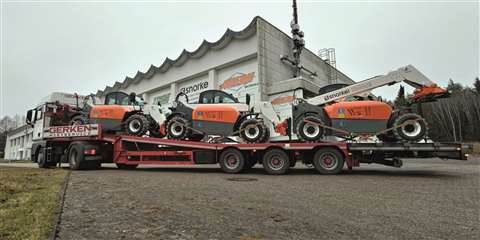 Earlier this year four of Snorkel’s SR626E all-electric telehandlers were delivered to German rental company Gerken, as part of its continuing investment in green technology. (PHOTO: Snorkel)
Earlier this year four of Snorkel’s SR626E all-electric telehandlers were delivered to German rental company Gerken, as part of its continuing investment in green technology. (PHOTO: Snorkel)
Compact electric telehandlers
Snorkel has entered the all-electric compact arena with the addition of the SR626E to its range.
The unit offers a maximum load capacity of 2,600kg and a lifting height of up to 5.79m. It is powered by 80V 300Ah lithium-ion batteries and can operate continuously for up to six hours between charges, depending on the conditions, and an on-board charger offers full overnight charging.
The 6.26 Full Electric from Faresin was the world’s first electric telehandler. Presented at Eima International in 2008, it is now available in an updated version with a 560Ah battery that offers more than 10 hours of battery life in job-site applications: more than a full day’s work. Thanks to the Superfast Charger, the battery can be charged in just about two hours.
Thanks to these peculiarities, it can work even indoors, such as logistics centres and greenhouses, or in low-emission construction sites, such as those in city centres.
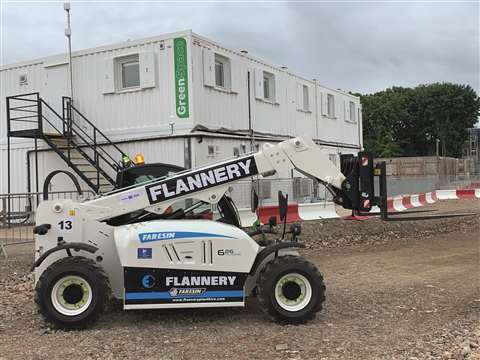 A Faresin 6.26 electric telehandler, owned by UK rental company Flannery. (PHOTO: Faresin)
A Faresin 6.26 electric telehandler, owned by UK rental company Flannery. (PHOTO: Faresin)
With the latest update, the 6.26 Full Electric boasts an autonomy of 10 hours, but with a quick recharge in the construction site, it could work for 24 hours. As far as transport is concerned, it is also approved for road driving.
In November 2020, JCB launched the all-electric 525-60E Loadall telehandler, with a maximum lift capacity of 2.5 tonnes and lift height of 6.m. The E denotes that it is part of the firm’s growing E-TECH line-up.
Other than being electrically powered, the machine can perform exactly the same as its diesel 525-60 sibling, with the same lift capacities and boom reach.
Rotating telehandler market
Another strong area of expansion for telehandlers is in the rotating market. Italian manufacturer Dieci says it has found the demand for rotary telehandlers is growing faster than that for fixed telehandlers.
“We believe that this phenomenon is mainly due to two aspects: on the one hand, the market is increasingly moving towards rentals, and on the other hand, the rotary telehandler is a relatively recent invention that is less well known and only just starting to be discovered.”
The company adds, “[They] were developed between the late 1990s and early 2000s, so many markets didn’t know about them until a few years ago, which means that there is great expansion potential for this type of vehicle.”
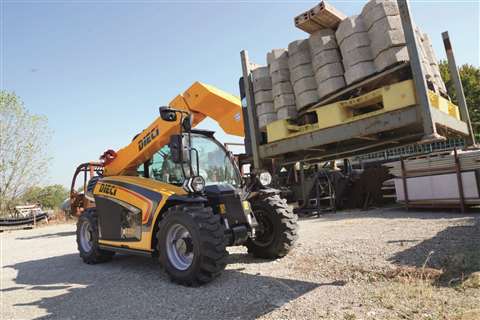 Dieci Apollo Smart 20.4 telehandler. (PHOTO: Dieci)
Dieci Apollo Smart 20.4 telehandler. (PHOTO: Dieci)
On the subject of rental, the company is seeing a change in mentality, as customers who need a specialised vehicle to perform specific work at height increasingly prefer to rent it.
The company says, “They make precise requests and don’t accept compromises.
Therefore, there is a tendency to ask rental firms for more high-performance and versatile vehicles, limited to the period of need.”
The company’s latest launch was the ultracompact Apollo Smart 20.4 telehandler, including the Mini Agri Smart 20.4 version for the agricultural market, in 2021.
And, over the last two years, Dieci has repowered its entire range of telehandlers to meet Stage V emission standard.
In addition, the company has updated its hardware and software platform on the Dieci range’s control system. This platform has been developed to meet the latest requirements in terms of health and safety for operators who use and manage the vehicles, from driving and transport through to maintenance.
It is based on a control unit with over 100 inputs/outputs - the nerve centre for all the peripherals of vehicles in the Dieci agricultural and industrial ranges.
Another example of how rental is increasingly turning to telehandlers comes from UK rental major AFI Group, which has invested in Manitou telehandlers for its new material lifting brand AFI Lifting.
“The new telehandler investment has been made to meet extra demand from customers wanting to hire telehandlers for industry sectors like construction, material handling, housing and building maintenance,” said AFI.
AFI’s telehandlers range offers unts from 5m to 20m lift heights, with load capacities from 2.4 tonnes to 12 tonnes.
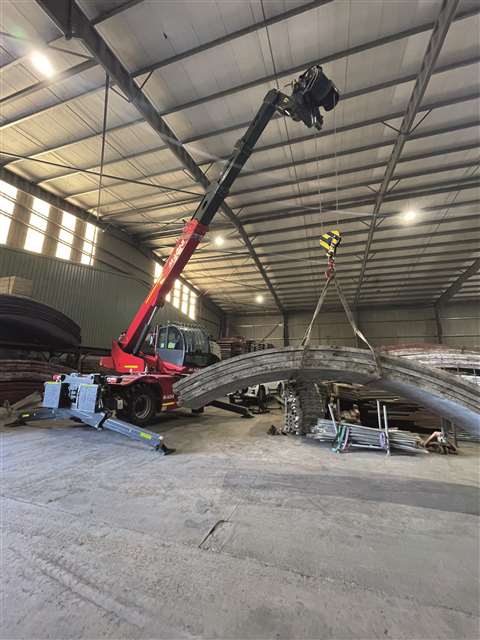 Magni has been updating it products to meet the latest emission standards. (PHOTO: Magni)
Magni has been updating it products to meet the latest emission standards. (PHOTO: Magni)
Stage V telehandler models
Magni has also been updating its rotating telehandlers to meet the latest emission standards, and says it was the first rotating telehandler manufacturer to switch to Stage IV final, followed by Stage V.
Eugenio Magni says, “So the main technical features in this moment are the new technologies about engines and how to dismiss the particulates through DPF and SCR systems.”
Magni, which specialises in rotating telehandlers, agrees that rotating products are seeing greater interest across the world, including in North America.
The company also has its sights on electric equipment. “For sure we will focus in developing a full electric machine because there is a demand for this.”
However, Magni adds that n the near future the company is taking a similar path to Genie with a ‘Twin Energy’ solution.
On the subject of hydrogen, Magni also sees potential but believes the reality is some way off. “For sure an electric machine that uses hydrogen cells to charge the batteries could have greater performance, but I think we are still far from these kind of solutions in our market.”
Bobcat has been updating its products to Stage V too. The new generation R-Series telehandler provides a choice of 12 models with Stage V engines. The new telehandlers cover lifting heights from 6m to 18m, and have maximum lifting capacities between 2.6 and 4.1 tonnes.
This is the latest phase in Bobcat’s Next is Now programme, combining product development and diversification with more intelligent, user friendly technologies and services.
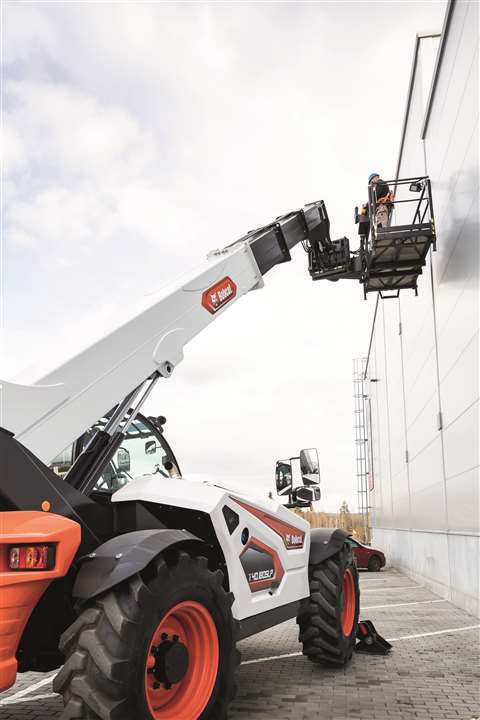 Bobcat T40.180 telehandler. (PHOTO: Bobcat)
Bobcat T40.180 telehandler. (PHOTO: Bobcat)
The new R-Series comprises 12 models across the Compact, Middle and High lift ranges from the TL26.60 at the lower end of the Compacts to the T40.180SLP at the top end of the High Lifts.
They offer a new cab with 360° ergonomics, protective shielding of all vital components in key areas, along with a robust frame and boom for working in all environments.
An engine designed for easy maintenance and optimised stability, with low centre of gravity and well-balanced design of the machines, also incorporates a heavy counterweight and a long wheelbase.
Commenting on the R-Series launch, Gustavo Otero, president of Doosan Bobcat EMEA, says. “Telehandlers are a fundamental asset of our business strategy and a key pillar of our Next is Now initiative. With these new models and the increased investment in our telehandler business, we are aiming to double the production of Bobcat telehandlers by 2025.”
US telehandler market
As mentioned, the interest in rotating models is growing in North America, which is not a traditional market for this product type.
Three new rotating telehandler models from JLG, through its partnership set up last year with Italy-based Dieci, are now available and working in North America.
The R1370, R1385 and R11100 provide capacities from 11,000 to 13,000lb and maximum reach heights of 67 to 97ft, with the R11100 being JLG’s highest reaching telehandler to date.
With 3-in-1 machine capabilities, a traditional telehandler, MEWP and rough terrain crane, the models also offer horizontal and vertical lift-and-place capabilities.
Likewise, JCB North America has launched a new rotating telehandler, the 512-83R.
Offering a maximum lift capacity of 12,000 pounds and a maximum working height of 83ft, the 512-83R is powered by a 145hp JCB EcoMax engine and has a two-speed hydrostatic transmission with a top travel speed of 25 mph.
The new rotating telehandler has a 7-inch display screen that can be programmed with envelope limits and it also can be utilised with a range of attachments, including winches and work platforms, with RFID tags for active load charts. The 512-83R’s stabilizers feature auto one-touch deployment, stowage and levelling.
Launched last year in Europe, Manitou’s new rotating MRT Vision and Vision+ range provides a new look machine with a number of updated features. The Vision range completely replaces the previous MRT models to meet Stage V emission standards.
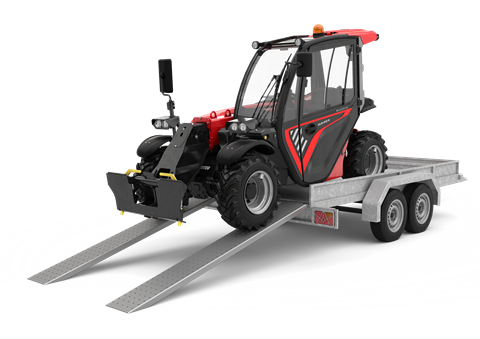 The Ulta Light ULM from Manitou. (PHOTO: Manitou)
The Ulta Light ULM from Manitou. (PHOTO: Manitou)
The Vision series offers 14 models with heights ranging from 16m to 25m, for a load capacity of up to 4.5 tonnes. It expands the previous MRT offering in this working height area by two models: the MRT 1645 and MRT 1845.
The latest compact telehandlers
Manitou Group has launched a new ultra-compact rough terrain telehandler aimed at the construction, landscaping and agriculture markets.
Designed to be easy to use and transport between farms and worksites for rental companies, the new Ulta Light Manitou (ULM) model has a transportable weight of less than 3 tonnes, which can be loaded onto a 3,500kg total capacity trailer, and driven using a standard European driving licence.
The four-wheel drive ULM’s dimensions are among the most compact on the market, offering a width of 1.49m and a height of 1.92m in two versions with lifting capacities of 1.25 tonne and 1.5 tonne.
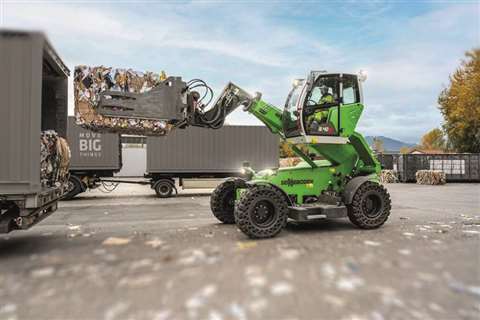 From Sennebogen comes the 355 E. (PHOTO: Sennegbogen)
From Sennebogen comes the 355 E. (PHOTO: Sennegbogen)
From Sennebogen comes the 355 E, the first model in the range - the new 3.40 G has dimensions of 5.5m in length and just under 2.5m width and offers a long wheelbase of 3.1m with a low centre of gravity. The weight of the machine is 9.3 tonnes.
The machine has been designed for tough work environments with a high-strength, solid steel frame and sophisticated telescopic boom ensuring that the forces in loading operations are optimally absorbed by the chassis.
And from Merlo comes the new eWorker telehandler, launched last October, and comprising two models offering zero emissions, noise and fossil fuels.
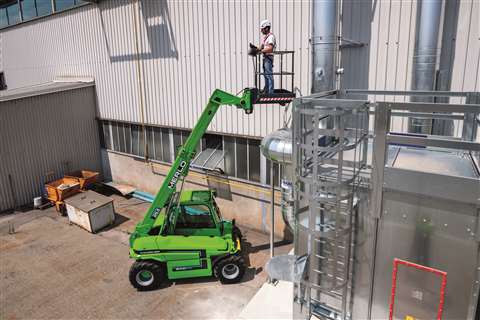 The new Merlo eWorker. (PHOTO: Merlo)
The new Merlo eWorker. (PHOTO: Merlo)
Both models lift 2,500kg and have maximum lift height of 4.8m. Italian rental company Mollo Noleggio announced in January it had purchased 101 telehandlers from Merlo, including the eWorker.
MAGAZINE
NEWSLETTER
The gold standard in market research
Off-Highway Research offers a library of more than 200 regularly updated reports, providing forensic detail on key aspects of the construction equipment industry.
Our detailed insights and expert analyses are used by over 500 of the world’s largest and most successful suppliers, manufacturers and distributers, to inform their strategic plans and deliver profitable growth.




